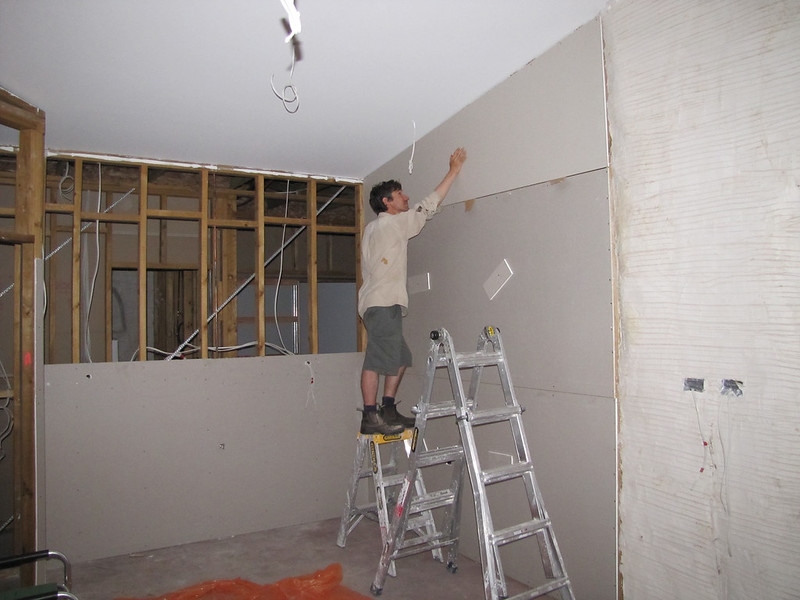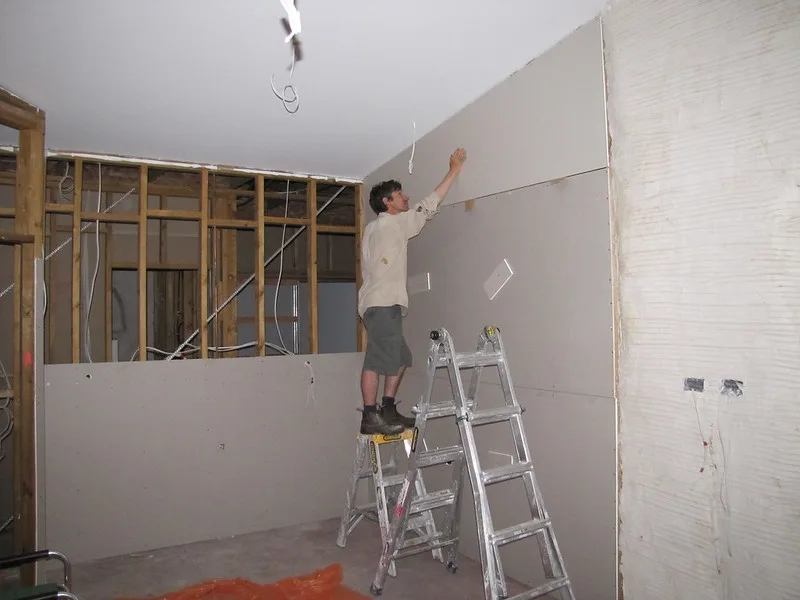Humans have been using plaster to build homes for thousands of years.

These days, your plasterer Sydney wide wouldn’t rely on a wet mixture to line the walls and ceilings of our home. Instead, we now use plasterboard, a prefabricated product made by compressing a plaster mixture between two thick sheets of construction paper.
Invented more than a century ago, plasterboard was a construction revolution, and it had a major impact on the amount of time that’s required to build and finish homes.
One hundred years later, plasterboard is in widespread use across the world, and has become famous for its affordability and efficiency. But the product isn’t without its flaws, and today we’re going to explore the advantages and disadvantages of plasterboard products.
The Advantages of Plasterboard
Plasterboard is one of the world’s simplest construction materials. Made by sandwiching a layer of gypsum plaster between two sheets of thick construction paper, the finished product is perfectly flat, straight, and ready for installation. It’s such a versatile material that it’s used all over the world, where it offers a range of benefits such as:
- Ease of installation. Plasterboard greatly speeds up the process of lining the inside of buildings. Sheets of plasterboard are available in a range of shapes and sizes, making them simple and reliable when it comes to interior fit-outs.
To make things easier, plasterboard can be affixed to timber frames using simple screws or nails, and the joints can be hidden with a wet plaster mix and jointing tape. Altogether, this creates a product that’s simple to install with very few specialty tools required.
- Affordability. For the most part, plasterboard is made from gypsum dust and a few other additives, making it an incredibly affordable product. A common sedimentary rock, gypsum is both abundant and easy to obtain, meaning manufacturers can produce plasterboard for just a few dollars per sheet. Along with the ease of installation, this makes plastering one of the most affordable parts of building a house.
- Uniform surfaces. Plaster was originally used to line the inside of homes because it provided a durable finish that could easily be painted or decorated. Modern plasterboards are no different, except the perfectly flat surfaces of plasterboard make it the perfect surface for painting and wallpapering.
- Versatility. Modern plasterboards are suitable for use in a wide range of applications. Depending on the product you’re using, it’s possible to find plasterboards that are fire-resistant, water-resistant, mold-resistant, flexible, sound-proof, and more.
- Fire resistance. Fires remain one of the biggest threats to the safety of your family. Luckily, ordinary plasterboard is resistant to fire. The gypsum plaster itself is non-flammable, and it will instead begin to flake or crumble when exposed to fire. For improved fire resistance, some specialty plasterboard products are available with improved fire ratings.
Read Also:
The Disadvantages of Plasterboard
Despite its affordability and ease of use, plasterboard is an imperfect product. It’s perfectly suited to a wide range of construction projects, but it also comes with a few major drawbacks that plasterers need to be mindful of:
- Brittle and prone to breaking. The flat, hard surface of plasterboard makes it the ideal wall covering for most construction projects. But, gypsum plaster lacks strength on its own, and it’s prone to dents and breaking. That means the rough and tumble of everyday life is more than enough to damage plasterboard walls and impact the finish of your home.
- Susceptible to water. The standard types of plasterboard used when building a house are highly susceptible to water. The dry gypsum plaster acts as a sponge, and any water that soaks into the plasterboard will quickly erode and damage the surface. This is a particular problem in wet areas like bathrooms, but unpainted or unsealed plaster can also become damaged just by absorbing water that’s in the air.
- Inflexibility. Most common plasterboards suffer from their inflexibility. While it makes them an ideal wall covering for flat and uniform surfaces, it limits the plasterboard’s ability to flex and move with your house.
Over time this usually means that plasterboard will develop cracks that are difficult to repair. A skilled plasterer Sydney wide will know how to design your installation to prevent cracking, but you may still need professional help to look after plasterboard walls and ceilings from time to time.










